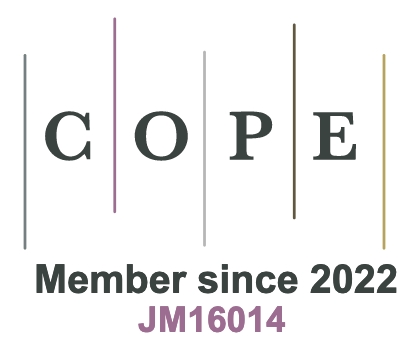REFERENCES
1. Chen, L. Q. Phase-field models for microstructure evolution. Annu. Rev. Mater. Res. 2002, 32, 113-40.
2. Boettinger, W. J.; Warren, J. A.; Beckermann, C.; Karma, A. Phase-field simulation of solidification. Annu. Rev. Mater. Res. 2002, 32, 163-94.
3. Steinbach, I. Phase-field models in materials science. Modelling. Simul. Mater. Sci. Eng. 2009, 17, 073001.
4. Moelans, N.; Blanpain, B.; Wollants, P. An introduction to phase-field modeling of microstructure evolution. Calphad 2008, 32, 268-94.
6. Su, Y.; Liang, C.; Wang, D. Composition- and temperature-dependence of β to ω phase transformation in Ti-Nb alloys. J. Mater. Inf. 2023, 3, 14.
8. Krill III, C. E.; Chen, L. Q. Computer simulation of 3-D grain growth using a phase-field model. Acta. Mater. 2002, 50, 3059-75.
9. Moelans, N.; Wendler, F.; Nestler, B. Comparative study of two phase-field models for grain growth. Comput. Mater. Sci. 2009, 46, 479-90.
10. Moelans, N.; Blanpain, B.; Wollants, P. Quantitative analysis of grain boundary properties in a generalized phase field model for grain growth in anisotropic systems. Phys. Rev. B. 2008, 78, 024113.
11. Karma, A.; Rappel, W. Quantitative phase-field modeling of dendritic growth in two and three dimensions. Phys. Rev. E. 1998, 57, 4323-49.
12. Warren, J.; Boettinger, W. Prediction of dendritic growth and microsegregation patterns in a binary alloy using the phase-field method. Acta. Metall. Mater. 1995, 43, 689-703.
13. Takaki, T. Phase-field modeling and simulations of dendrite growth. ISIJ. Int. 2014, 54, 437-44.
14. Stefanovic, P.; Haataja, M.; Provatas, N. Phase-field crystals with elastic interactions. Phys. Rev. Lett. 2006, 96, 225504.
15. Boussinot, G.; Le Bouar, Y.; Finel, A. Phase-field simulations with inhomogeneous elasticity: comparison with an atomic-scale method and application to superalloys. Acta. Mater. 2010, 58, 4170-81.
16. Shchyglo, O.; Ali, M. A.; Salama, H. Efficient finite strain elasticity solver for phase-field simulations. npj. Comput. Mater. 2024, 10, 1235.
17. Kim, J. Phase field computations for ternary fluid flows. Comput. Methods. Appl. Mech. Eng. 2007, 196, 4779-88.
18. Jeong, J. H.; Goldenfeld, N.; Dantzig, J. A. Phase field model for three-dimensional dendritic growth with fluid flow. Phys. Rev. E. 2001, 64, 041602.
19. Celani, A.; Mazzino, A.; Muratore-Ginanneschi, P.; Vozella, L. Phase-field model for the Rayleigh–Taylor instability of immiscible fluids. J. Fluid. Mech. 2009, 622, 115-34.
20. Wu, J. Y.; Nguyen, V. P.; Nguyen, C. T.; Sutula, D.; Sinaie, S.; Bordas, S. P. A. Chapter One - Phase-field modeling of fracture. Adv. Appl. Mech. 2020, 53, 1-183.
21. Miehe, C.; Schänzel, L.; Ulmer, H. Phase field modeling of fracture in multi-physics problems. Part I. Balance of crack surface and failure criteria for brittle crack propagation in thermo-elastic solids. Comput. Methods. Appl. Mech. Eng. 2015, 294, 449-85.
22. Miehe, C.; Hofacker, M.; Schänzel, L.; Aldakheel, F. Phase field modeling of fracture in multi-physics problems. Part II. Coupled brittle-to-ductile failure criteria and crack propagation in thermo-elastic–plastic solids. Comput. Methods. Appl. Mech. Eng. 2015, 294, 486-522.
23. Dutil, Y.; Rousse, D. R.; Salah, N. B.; Lassue, S.; Zalewski, L. A review on phase-change materials: mathematical modeling and simulations. Renew. Sustain. Energy. Rev. 2011, 15, 112-30.
24. Bui, T. Q.; Hu, X. A review of phase-field models, fundamentals and their applications to composite laminates. Eng. Fract. Mech. 2021, 248, 107705.
25. Raina, A.; Miehe, C. A phase-field model for fracture in biological tissues. Biomech. Model. Mechanobiol. 2016, 15, 479-96.
26. Tonks, M. R.; Gaston, D.; Millett, P. C.; Andrs, D.; Talbot, P. An object-oriented finite element framework for multiphysics phase field simulations. Comput. Mater. Sci. 2012, 51, 20-9.
27. Gültekin, O.; Dal, H.; Holzapfel, G. A. A phase-field approach to model fracture of arterial walls: theory and finite element analysis. Comput. Methods. Appl. Mech. Eng. 2016, 312, 542-66.
28. Yue, P.; Zhou, C.; Feng, J. J.; Ollivier-Gooch, C. F.; Hu, H. H. Phase-field simulations of interfacial dynamics in viscoelastic fluids using finite elements with adaptive meshing. J. Comput. Phys. 2006, 219, 47-67.
29. Wang, C.; Wise, S. M. An energy-stable and convergent finite-difference scheme for the modified phase field crystal equation. SIAM. J. Numer. Anal. 2011, 49, 945-69.
30. Hu, Z.; Wise, S. M.; Wang, C.; Lowengrub, J. S. Stable and efficient finite-difference nonlinear-multigrid schemes for the phase field crystal equation. J. Comput. Phys. 2009, 228, 5323-39.
31. Liu, H.; Valocchi, A. J.; Zhang, Y.; Kang, Q. Phase-field-based lattice Boltzmann finite-difference model for simulating thermocapillary flows. Phys. Rev. E. 2013, 87, 013010.
32. Gain, A. L.; Paulino, G. H. Phase-field based topology optimization with polygonal elements: a finite volume approach for the evolution equation. Struct. Multidisc. Optim. 2012, 46, 327-42.
33. Chen, L. Q.; Shen, J. Applications of semi-implicit Fourier-spectral method to phase field equations. Comput. Phys. Commun. 1998, 108, 147-58.
34. Liu, C.; Shen, J. A phase field model for the mixture of two incompressible fluids and its approximation by a Fourier-spectral method. Physica. D. 2003, 179, 211-28.
35. Feng, W. M.; Yu, P.; Hu, S. Y.; Liu, Z. K.; Du, Q.; Chen, L. Q. Spectral implementation of an adaptive moving mesh method for phase-field equations. J. Comput. Phys. 2006, 220, 498-510.
36. Shen, J.; Yang, X. An efficient moving mesh spectral method for the phase-field model of two-phase flows. J. Computat. Phys. 2009, 228, 2978-92.
37. Muranushi, T. Paraiso: an automated tuning framework for explicit solvers of partial differential equations. Comput. Sci. Disc. 2012, 5, 015003.
38. Yamanaka, A.; Aoki, T.; Ogawa, S.; Takaki, T. GPU-accelerated phase-field simulation of dendritic solidification in a binary alloy. J. Cryst. Growth. 2011, 318, 40-5.
39. Dingreville, R.; Roberston, A. E.; Attari, V.; et al. Benchmarking machine learning strategies for phase-field problems. Modelling. Simul. Mater. Sci. Eng. 2024, 32, 065019.
40. Teichert, G. H.; Garikipati, K. Machine learning materials physics: surrogate optimization and multi-fidelity algorithms predict precipitate morphology in an alternative to phase field dynamics. Comput. Methods. Appl. Mech. Eng. 2019, 344, 666-93.
41. Teichert, G.; Natarajan, A.; Van der Ven, A.; Garikipati, K. Machine learning materials physics: integrable deep neural networks enable scale bridging by learning free energy functions. Comput. Methods. Appl. Mech. Eng. 2019, 353, 201-16.
42. Wang, Z.; Huan, X.; Garikipati, K. Variational system identification of the partial differential equations governing the physics of pattern-formation: inference under varying fidelity and noise. Comput. Methods. Appl. Mech. Eng. 2019, 356, 44-74.
43. Yabansu, Y. C.; Steinmetz, P.; Hötzer, J.; Kalidindi, S. R.; Nestler, B. Extraction of reduced-order process-structure linkages from phase-field simulations. Acta. Mater. 2017, 124, 182-94.
44. Herman, E.; Stewart, J. A.; Dingreville, R. A data-driven surrogate model to rapidly predict microstructure morphology during physical vapor deposition. Appl. Math. Model. 2020, 88, 589-603.
45. Montes de Oca Zapiain, D.; Stewart, J. A.; Dingreville, R. Accelerating phase-field-based microstructure evolution predictions via surrogate models trained by machine learning methods. npj. Comput. Mater. 2021, 7, 471.
46. Hu, C.; Martin, S.; Dingreville, R. Accelerating phase-field predictions via recurrent neural networks learning the microstructure evolution in latent space. Comput. Methods. Appl. Mech. Eng. 2022, 397, 115128.
47. Fetni, S.; Pham, T. Q. D.; Hoang, T. V.; et al. Capabilities of auto-encoders and principal component analysis of the reduction of microstructural images; application on the acceleration of phase-field simulations. Comput. Mater. Sci. 2023, 216, 111820.
48. Wu, P.; Iquebal, A. S.; Ankit, K. Emulating microstructural evolution during spinodal decomposition using a tensor decomposed convolutional and recurrent neural network. Comput. Mater. Sci. 2023, 224, 112187.
49. Ahmad, O.; Kumar, N.; Mukherjee, R.; Bhowmick, S. Accelerating microstructure modeling via machine learning: a method combining Autoencoder and ConvLSTM. Phys. Rev. Mater. 2023, 7, 083802.
50. Zhou, X.; Sun, S.; Cai, S.; et al. Accelerating three-dimensional phase-field simulations via deep learning approaches. J. Mater. Sci. 2024, 59, 15727-37.
51. Oommen, V.; Shukla, K.; Desai, S.; Dingreville, R.; Karniadakis, G. E. Rethinking materials simulations: blending direct numerical simulations with neural operators. npj. Comput. Mater. 2024, 10, 1319.
52. Jokisaari, A.; Voorhees, P.; Guyer, J.; Warren, J.; Heinonen, O. Benchmark problems for numerical implementations of phase field models. Comput. Mater. Sci. 2017, 126, 139-51.
54. Allen, S. M.; Cahn, J. W. A microscopic theory for antiphase boundary motion and its application to antiphase domain coarsening. Acta. Metall. 1979, 27, 1085-95.
55. Stewart, J. A.; Dingreville, R. Microstructure morphology and concentration modulation of nanocomposite thin-films during simulated physical vapor deposition. Acta. Mater. 2020, 188, 181-91.
56. Monti, J. M.; Hopkins, E. M.; Hattar, K.; Abdeljawad, F.; Boyce, B. L.; Dingreville, R. Stability of immiscible nanocrystalline alloys in compositional and thermal fields. Acta. Mater. 2022, 226, 117620.
57. Blaiszik, B.; Chard, K.; Pruyne, J.; Ananthakrishnan, R.; Tuecke, S.; Foster, I. The materials data facility: data services to advance materials science research. JOM 2016, 68, 2045-52.
58. Blaiszik, B.; Ward, L.; Schwarting, M.; et al. A data ecosystem to support machine learning in materials science. MRS. Commun. 2019, 9, 1125-33.
59. Gesch, A. H.; Hu, C. Ostwald Ripening Dataset for “Accelerating phase-field simulation of coupled microstructural evolution using autoencoder-based recurrent neural networks”. 2025.
60. Cho, K.; van, Merriënboer., B.; Gulcehre, C.; et al. Learning phrase representations using RNN encoder-decoder for statistical machine translation. arXiv 2014, arXiv:1406.1078. https://doi.org/10.48550/arXiv.1406.1078. (accessed 9 Jun 2025).
61. Desai, S.; Shrivastava, A.; D’elia, M.; Najm, H. N.; Dingreville, R. Trade-offs in the latent representation of microstructure evolution. Acta. Mater. 2024, 263, 119514.
62. Bank, D.; Koenigstein, N.; Giryes, R. Autoencoders. In: Rokach L, Maimon O, Shmueli E, editors. Machine Learning For Data Science Handbook. Cham: Springer International Publishing; 2023. pp. 353-74.
63. Hu, A.; Liu, Z.; Chen, Q.; et al. A new framework for predicting tensile stress of natural rubber based on data augmentation and molecular dynamics simulation data. J. Mater. Inf. 2024, 4, 11.
64. Chowdhury, A.; Kautz, E.; Yener, B.; Lewis, D. Image driven machine learning methods for microstructure recognition. Comput. Mater. Sci. 2016, 123, 176-87.
65. Chan, H.; Cherukara, M.; Loeffler, T. D.; Narayanan, B.; Sankaranarayanan, S. K. R. S. Machine learning enabled autonomous microstructural characterization in 3D samples. npj. Comput. Mater. 2020, 6, 267.
66. Creswell, A.; Arulkumaran, K.; Bharath, A. A. On denoising autoencoders trained to minimise binary cross-entropy. arXiv 2017, arXiv:1708.08487. https://doi.org/10.48550/arXiv.1708.08487. (accessed 9 Jun 2025).
67. Tealab, A. Time series forecasting using artificial neural networks methodologies: a systematic review. Future. Comput. Informatics. J. 2018, 3, 334-40.
69. Naser, M. Z.; Alavi, A. H. Error metrics and performance fitness indicators for artificial intelligence and machine learning in engineering and sciences. Archit. Struct. Constr. 2023, 3, 499-517.








